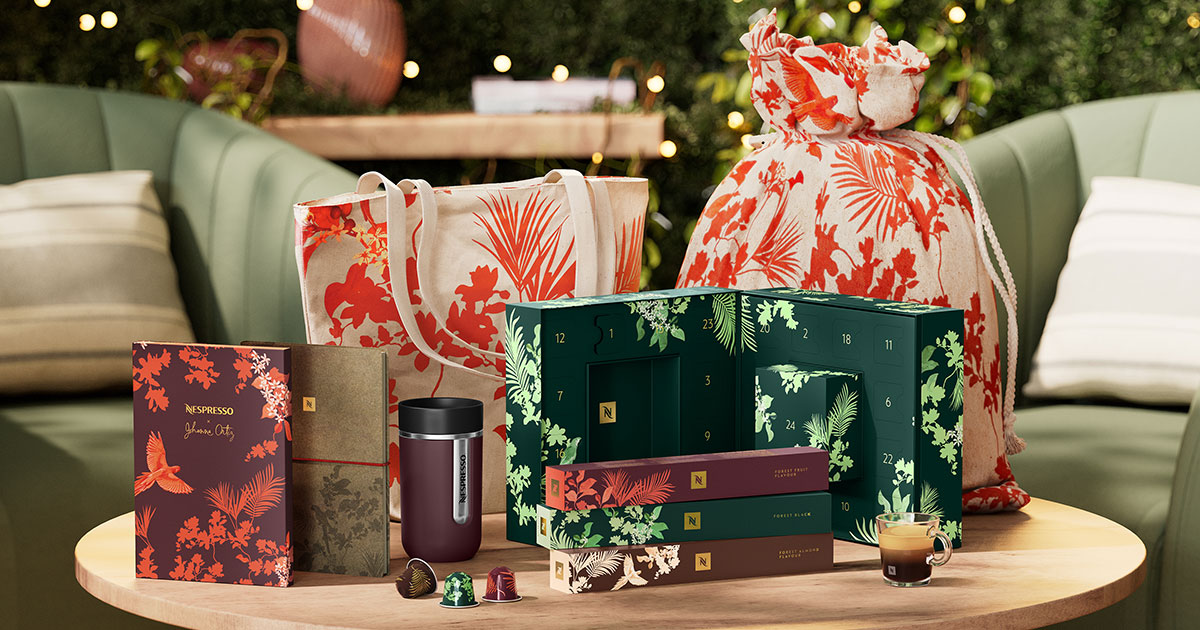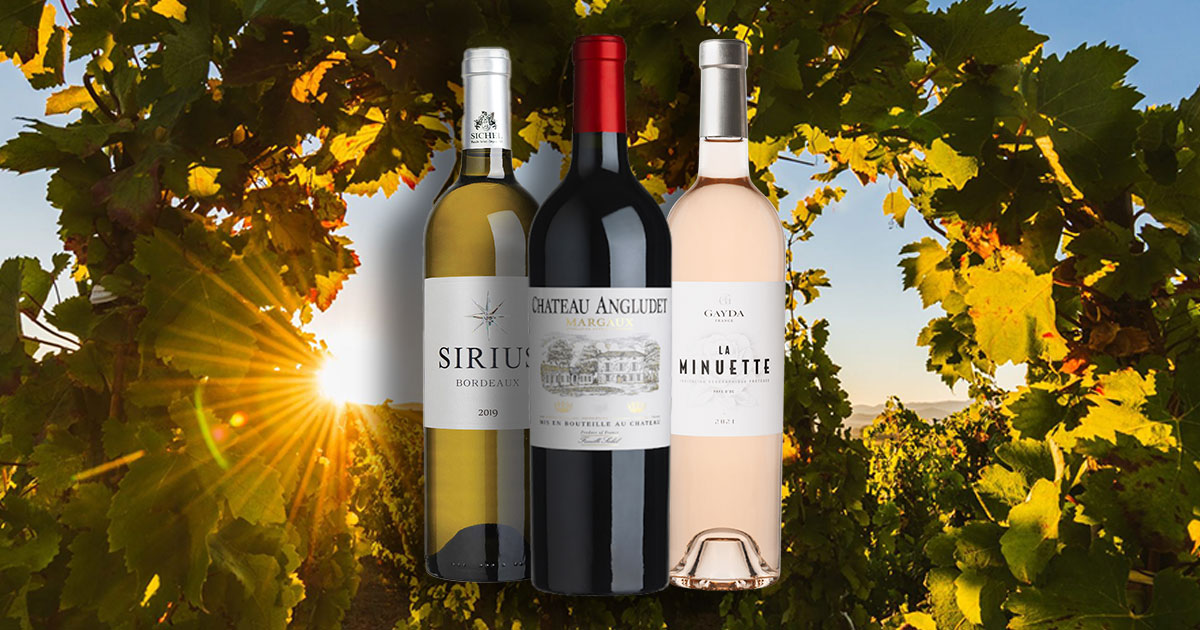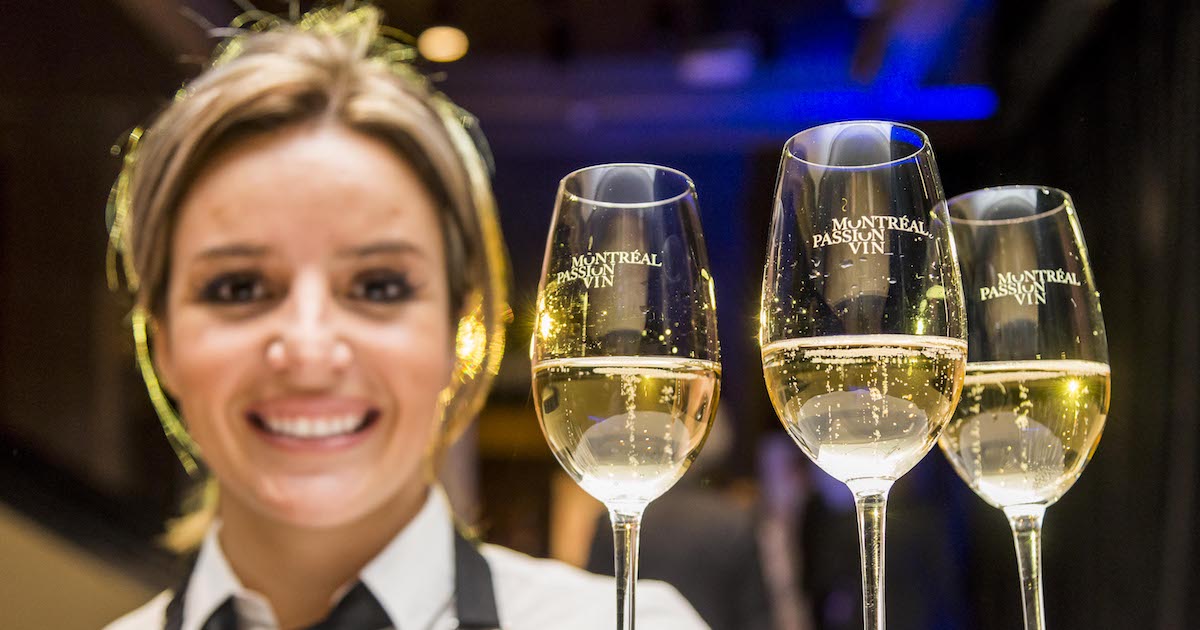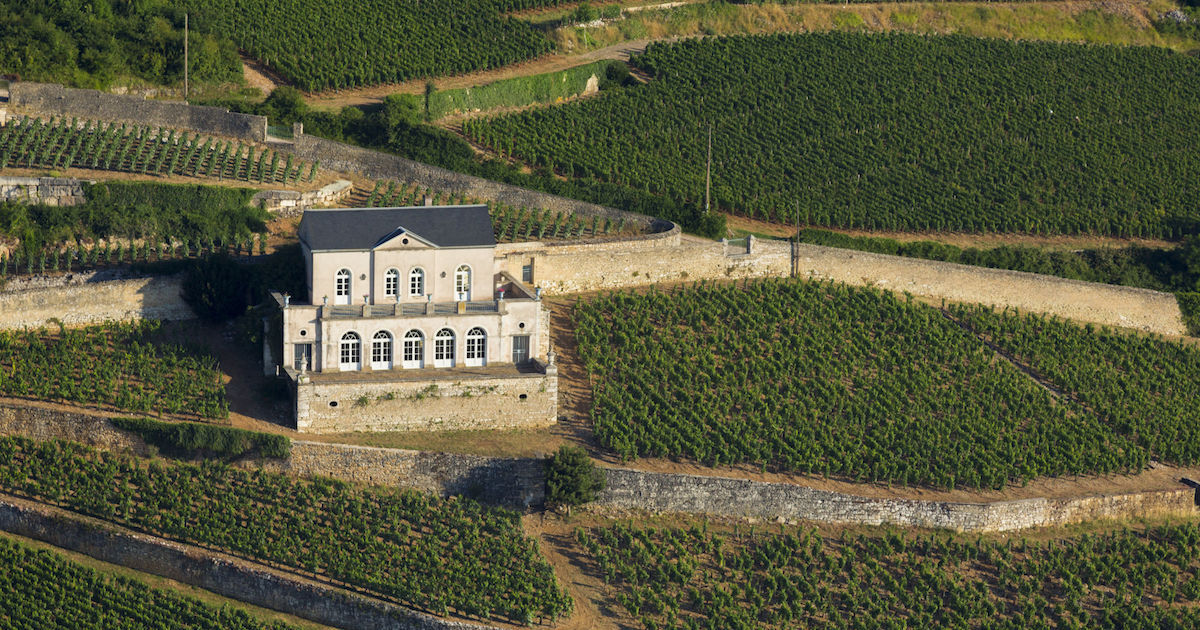
The Wine Regions: Burgundy
For our new series on wines, we make you discover the wine regions of the world. The first one, The Wine Regions : Burgundy. Take a look and learn.
Article published on | 7 minutes of readingI’m like many of you dear readers, I’m not a wine expert, but I like to learn every day, and today it’s about. I decided to start a new series to share my encounters with the different wine professionals, the wine regions. Let’s start with our first article, The Wine Regions : Burgundy.
The Wine Regions : Burgundy and it’s five wine-producing regions
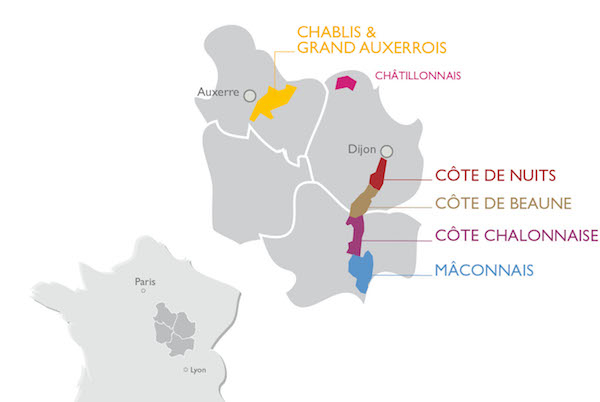
First, it is interesting to know that Burgundy has 5 wine regions (Chablis & Grand Auxerrois, Côte de Nuits, Côte de Beaune, Côte Chalonnaise and Mâconnais). The region is located at the crossroads of Mediterranean influences in the south, continental in the north and oceanic in the west.

Credit : BIVB / Jean-Pierre MUZARD
It is this geographical situation of the vineyard that gives the wines of Burgundy a unique identity and makes it a perfect terroir for the grape varieties of Pinot Noir and Chardonnay.
The region is about 230 km from the North to the South, which gives it about 28 840 hectares of production vines, 7% of the French vineyard of Designation of Origin, according to average data from 2010 to 2014. This production is equivalent to 187 million bottles produced each year, which corresponds to 0.5% of world production.
The Wine Regions : Burgundy, a culture of noble grape varieties
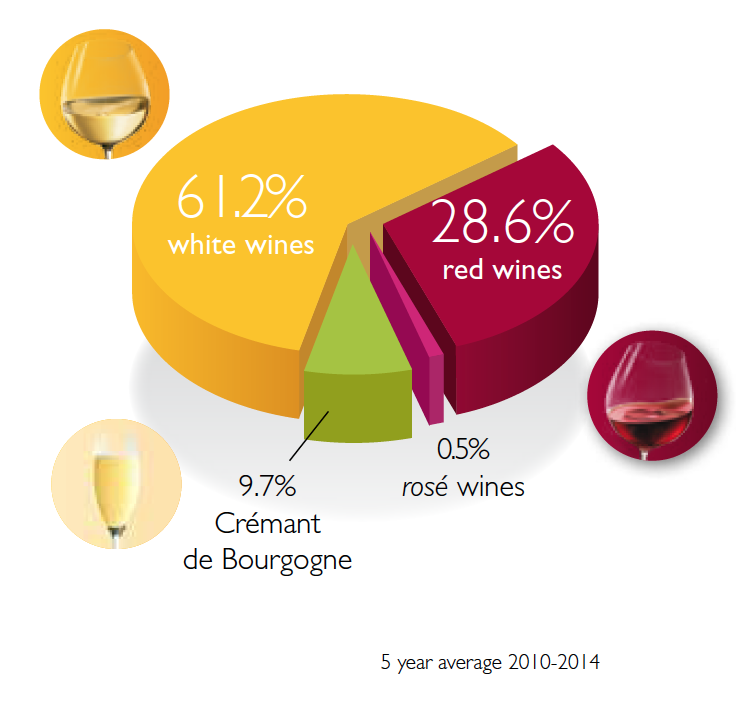
The wines of Burgundy are mainly wines of mono-vines, which gives them a pure expression. It is the absolute reference in the production of Chardonnay (48%) and Pinot Noir (34%) of character. You can also find grape varieties such as Gamay (10%) and Aligoté (6%).

Crédit : BIVB / Aurélien IBANEZ
While we see this almost distinct culture between white wine and red wine having almost 50% of the territory, we can expect similar proportions with the colors of the wines, but this is not exactly the case . White dominates mostly even if the great red wines of Burgundy make the area famous.
The appellations express the diversity of characters of Burgundy wines. All the wines of Burgundy are Appellations d’Origine Contrôlée (AOC), now numbering 100, you can see a few at the bottom.
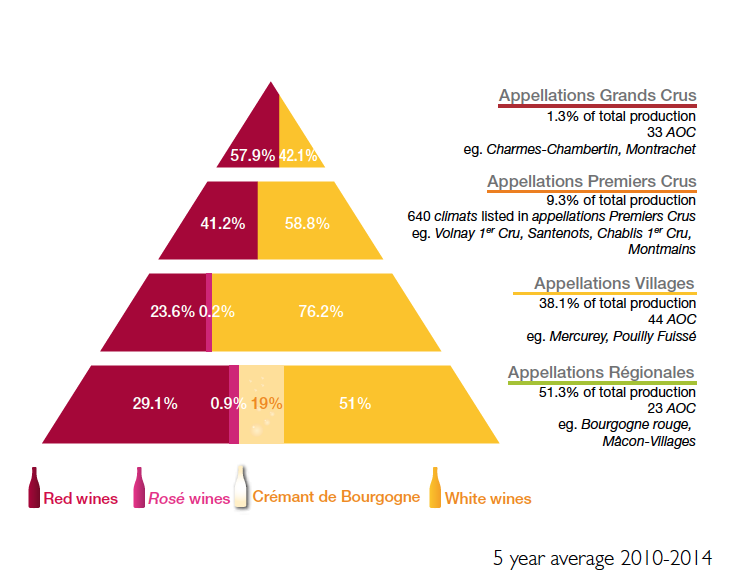
The Wine Regions : Burgundy, a favorable weather for the region
As I said at the beginning of my article, because of its unique geographical location, Burgundy is exposed to a semi-continental climate. Depending on the season, the vineyard benefits from ocean influences (spring and autumn), continental (winter) or southern (summer) influences. The region enjoys the sunshine and high temperatures in summer allow an optimal maturation of the grapes, concentrating the aromas.
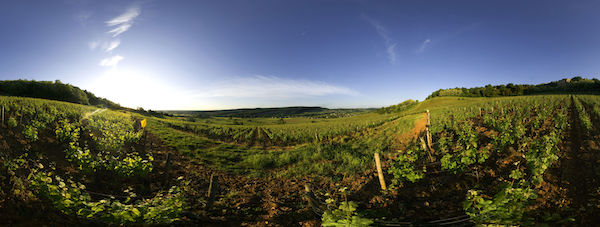
Crédit : BIVB / VINOGEO / Michel BAUDOIN
This exhibition and this orientation favor the quality: The orientation of the plots and the exposure of the vines on hillsides at altitudes between 200 and 500 meters allow:
- better frost resistance
- natural protection against west winds
- to get the most out of the sunshine
- natural drainage
The soil and the subsoil, irreplaceable and inimitable:
- The subsoil of Burgundy was formed between 150 and 180 million years ago.
- It is mainly composed of marls and limestones of marine origin of the Jurassic from where the mineral side of the whites.
- It is in the limestone that the roots will draw the finesse, the richness and the minerality characteristic of the appellations of Burgundy.
The Wine Regions : Burgundy, a climate that expresses the terroir
Typical of Burgundy, Climats (term for a vineyard producing a specific type of wine (Source: Wikipedia)) are precisely delimited parcels of land, benefiting from specific geological and climatic conditions which, combined with the work of men, gave birth to an exceptional mosaic of terroir. Les Climats transmits to each Appellation de Bourgogne a unique and remarkable organoleptic personality. More than 600 climates classified as « Premiers Crus » make up the Burgundy vineyard.
Les clos: the illustration of Burgundy Climates
- In Burgundy, an enclosure corresponds to a climate surrounded by walls.
- World-renowned, the closes have shaped the landscape of the vineyard of Burgundy.
Even though it is “traditional”, viticulture in Burgundy is constantly in motion and in search of excellence with its respectful approach to the vineyard, the land and the terroir, its non-interventionist methods of winemaking, its cultural practices and techniques of the wines that make reference and a constant search for quality, while respecting existing know-how.
A few points of reference to guide you in the sensory discovery of the white wines of Burgundy.
Colors et nuances :
- White gold
- green gold
- dark golden
- yellow green
- straw yellow
- pale yellow
- orange yellow,
- dark yellow
- etc.
The Aromatic families:
- Plant scents and aromas can indicate young and fresh wines: mint, fern, tobacco, blackcurrant bud…
- Floral notes are a sign of a distinguished and delicate wine: limewood, camomile, verbena, hawthorn, rose, honeysuckle, wild rose, acacia, broom…
- Notes of fresh fruit, citrus fruits and exotic fruits unfold in young white wines: quince, pear, apple, peach, lemon, grapefruit, exotic fruits
- Notes of dry fruits can be found in wines that are beginning to age and demonstrate the complexity of Burgundy wines: apricot, hazelnut (linked to barrel ageing), almond, walnut, orange peel…
- Spicy notes, just like in cooking, can be uncovered in wine. They generally develop with age and are a sign of great wines: vanilla, cinnamon, aniseed, pepper…
- Mineral notes are, above all, linked to Chablis wines, but the white wines from Côte de Beaune and Mâconnais also have some of these: stone powder, pencil lead, flint…
- Food notes indicate that the wine is already a few years old: honey, caramel, butter, iodine…
- Notes of undergrowth bring scents of the humid undergrowth and dampened earth: mushrooms, truffle, tree moss…

Crédit : BIVB / Aurélien IBANEZ
A few points of reference to guide you in the sensory discovery of the Burgundy reds.
Colors and nuances :
- Purplish red
- garnet
- ruby red
- morello cherry
- brick red
- tile red
- mahogany
- Etc.…
Rosé wines can be
- purplish pink
- raspberry pink
- orangey
- salmon pink
- grey
- Etc.
The Aromatic families are :
- Notes of fresh fruits are mainly reflected in the first few years of a wine or in very old wines. They express the characteristics of the Pinot Noir grape: raspberry, cherry, blackberry, blackcurrant, wild berries, redcurrant…
- Floral notes are very subtle. An aroma of rose often appears in great red wines that have aged: rose, violet, peony…
- Plant aromas can indicate young, fresh wines: blackcurrant bud, cut grass, tobacco…
- Notes of cooked fruit indicate a wine that has been processed using very mature grapes and they often indicate a vintage of very rich wines: fig, jam, prunes…
- Spicy notes are generally a result of wine that has been left in a barrel. They can be noted in red wines through both the smell and the taste: cinnamon, gingerbread, bay…
- Notes of coffee or liquorice are also often a result of time spent in a barrel. Aromas of caramel reveal old and mature wines: liquorice, grilled almonds…
- Animal notes often unfold in old wines. At this stage, fruit notes have often disappeared: meat, game, musk, wild animals…
- Notes of undergrowth evoke the smell of dampened earth. They are found in old and mature wines: mushrooms, truffle, tree moss…
The Wine Regions : Burgundy in SAQ:
- Claude Chevalier, Bourgogne
Merlin Macon La Roche Vineuse
Domaine La Croix Montjoie Bourgogne Vezelay L’Elégante
Source: Bureau Interprofessionel des Vins de Bourgogne
Why not make a cruise in the great vineyards ?
Note: When we learn that an error has slipped into our site, we report it by correcting it. If you notice an error, please inform us by contacting us through our Contact us page.


